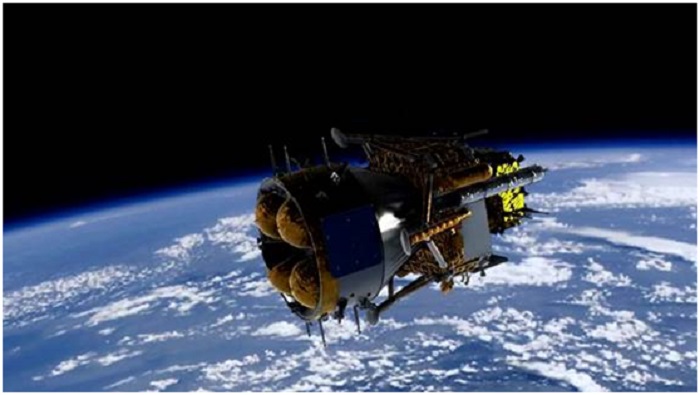



China’s Chang’e-5 lunar probe was lifted up at 4:30 am Beijing time on Nov. 24, as Long March-5 Y5, China’s state-of-the-art carrier rocket, blasted off from the Wenchang Spacecraft Launch Site in the southern province of Hainan, the 353rd launch of the Long March family.
About 2,200 seconds after lift-off, the Chang’e-5 lunar probe separated from the rocket and entered the planned orbit, starting the country’s first attempt to retrieve samples from an extraterrestrial body.
The Long March-5 Y5 rocket went through four separations, including booster separation, fairing separation, primary and secondary separation, and rocket separation.
The lunar probe is made up of an orbiter, a lander, an ascender and a returner. After it enters the lunar orbit, the lander-ascender combination will separate from the orbiter-returner combination. The orbiter-returner combination will stay in orbit, while the lander-ascender combination is expected to touch down on the near side of the moon and launch follow-up missions.
The Chang’e-5 lunar mission aims at three major engineering targets. First, it is expected to make breakthroughs in key technologies such as narrow-launch-window and multi-orbit fire data loading and launching, unmanned lunar sampling and sealing, lunar ascending, lunar orbit and rendezvous, as well as the storage of lunar samples, to improve China’s aerospace technology. Second, it marks the first attempt of China to retrieve samples from an extraterrestrial body, which will greatly advance China’s sci-fi development. Third, it will improve the country’s lunar exploration system and lay a solid foundation for future manned lunar-landing and deep space exploration missions.
The major scientific goal of the Chang’e-5 lunar mission is to investigate the landscape and geological background around the landing area, launch on-site data analysis for lunar samples, and establish a relation between field investigation data and lab data. Besides, it will also carry out long-term and systematic lab research for the lunar samples collected, so as to study the structure, physical characters, and material composition of lunar soil, as well as the origin and evolvement of the moon.
The Chang’e-5 lunar mission is organized by China National Space Administration (CNSA). The CNSA Lunar Exploration and Space Program Center, China Academy of Launch Vehicle Technology, China Academy of Space Technology, China Satellite Launch and Tracking Control General, and the National Astronomical Observatories are responsible for the overall project, carrier rockets, detectors, survey and recovery, and ground application, respectively.
China’s lunar exploration project is a signature project outlined in the National Medium & Long-term Program for Science and Technology Development (2006-2020), and marks a major strategic decision of the Communist Party of China to promote the development of aerospace, advance sci-fi progress and innovation, and enhance comprehensive national strength. Since its launch in January 2004, it has successfully carried out five missions.


Cooperation between China and Nigeria had.



Nigerian government has urged trainees of.



Minister of State for Foreign Affairs,.


The Nigerian Government has congratulated the.


The Humanitarian Service Diamond Awards has.
A Chinese Company, Inner Galaxy Steel.


The Programme Coordinator, Regulatory, Compliance and.


A Non-Governmental Organization (NGO), Committee for.
The Trustfund Pensions Limited has chided.


The House of Representatives Committee on.
Leave a Comment